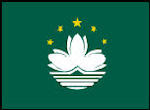Na quarta série dedicada ao tema das Cenas da Vida do Quotidiano do Passado, o desenhador Chai Wai Fai, pretendeu lembrar as experiências vividas no dia a dia do passado.
Os selos representam as seguintes actividades:
Bolo de Nove Folhados – confecção do doce regional, que é preparado em camadas.
Chá de Ervas Chinesas – preparação do remédio, de sabor amargo e muito usado na província de Guangdong.
Riquexó – O riquexó, como antigo meio de transporte antigo.
Luta de Grilos – Diversão tradicional
Bordados – Elaborados bordados, com pérolas, utilizados pelos ricos, como forma de mostrar a sua opulência e como sustento das famílias mais pobres.
Concerto de Calçado – Devido ao seu elevado custo, a maioria das pessoas, recorria aos serviços dos sapateiros, para reparar os sapatos, quando estes se estragavam.
Artesão – Com o recurso a materiais simples e muita imaginação, tudo era possível ser feito pelas mãos destes mestres.
Cerzido - Arte de colocar remendos nas roupas gastas pelo uso.
A Apanha da Alface e Lai Si do Leão – O leão, é tido como um animal que traz boa sorte. Durante as festividades, é comum as pessoas colocarem um leão em local estratégico, como forma de proporcionar animação e bom augúrio.
Mais Informação aqui.
In the fourth series of scenes devoted to the theme of Life of Life of the Past, Wai Fai Chai designer, wanted to remember the experiences on the day of the past. The stamps represent the following activities:
Nine Layer Cake – Local skillfully made dessert with multiple layers Chinese
Herbal Tea - preparation of medicine, bitter-tasting and widely used in Guangdong province. Rickshaw - The rickshaw as old former means of transport.
Cricket Fishing – Traditional entertainment fights with crickets
Bead Embroidery - Made embroidered with pearls, used by the rich as a way to show their wealth and livelihoods of the poorest families.
Shoe Mending - Due to its high cost, most people engaged the services of shoemakers, to repair the shoes, when they spoiled.
Paper-tying Craftsman - With the use of simple materials as bamboo rods, paper and past and a lot of imagination, almost everything it could be done by the hands of these masters.
Darning - Art of putting patches on clothing worn by use.
“Choy Chang” (Picking the green and red pocket) - The lion is regarded as an animal that brings good luck. During the festivities, it is common people put a lion in a strategic, to provide animation and good omen.
More information here.
The Stamps:
 Dados Técnicos/Technical Data
Dados Técnicos/Technical Data
Valor do Selos/Stamps Value: 8 x 1.50 Patacas
Valor do Bloco/Souvenir Sheet Value: 10.00 Patacas
Desenho/Design: Chai Wai Fai
Data emissão/Issue date: 01.03.2007
Impressor/Printer: Österreichische Staatsdruckerei, Austria
Impressão/Print: Offset Lithography
Papel/Paper: Paper with Security Fibers
Picotagem/Perforation: 14 x 14


 Dados Técnicos/Technical Data
Dados Técnicos/Technical Data
 Dados Técnicos/Technical Data
Dados Técnicos/Technical Data Dados Técnicos/Technical Data
Dados Técnicos/Technical Data Dados Técnicos/Technical Data
Dados Técnicos/Technical Data Dados Técnicos/Technical Data
Dados Técnicos/Technical Data Dados Técnicos/Technical Data
Dados Técnicos/Technical Data The Souvenir Sheet:
The Souvenir Sheet: The FDC with Stamps:
The FDC with Stamps: The FDC with Souvenir Sheet:
The FDC with Souvenir Sheet: The Post Mark:
The Post Mark: Dados Técnicos/Technical Data
Dados Técnicos/Technical Data